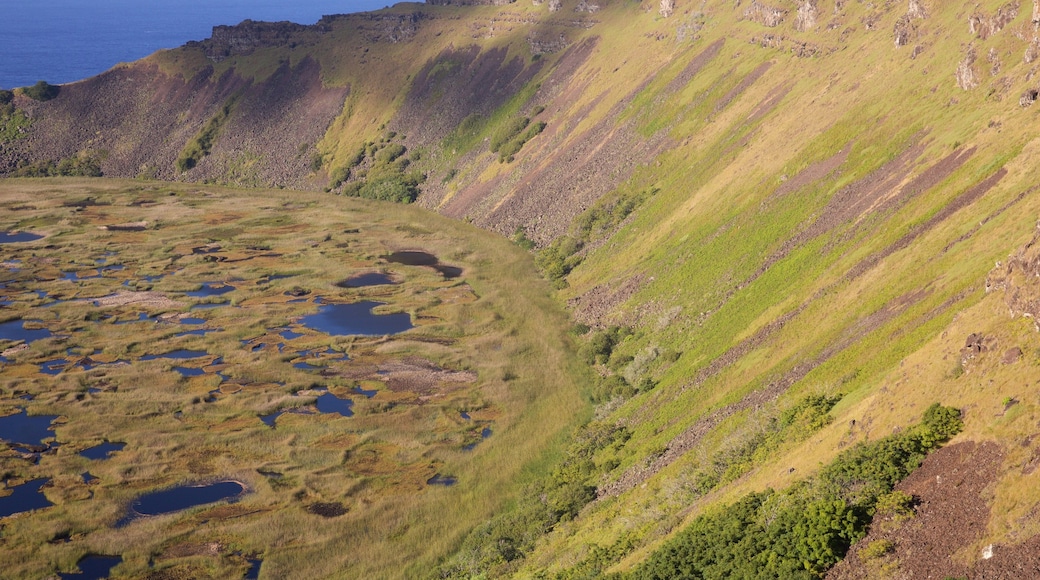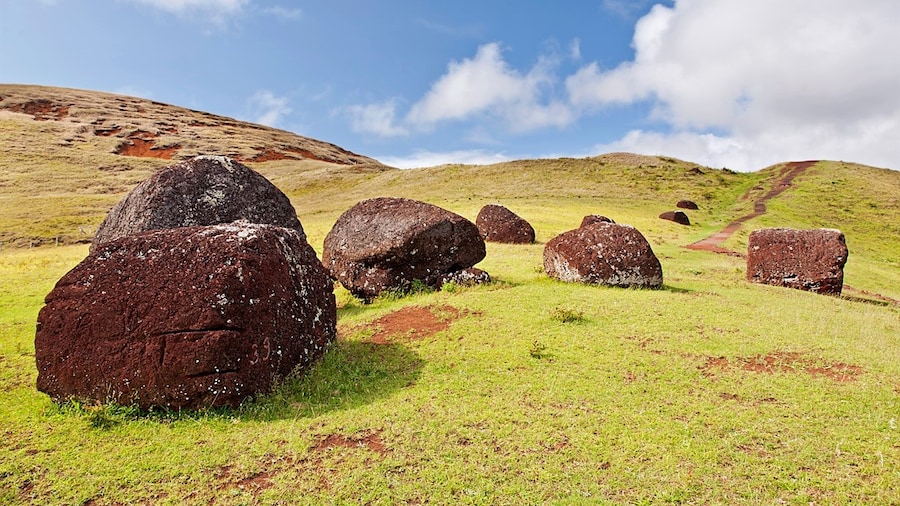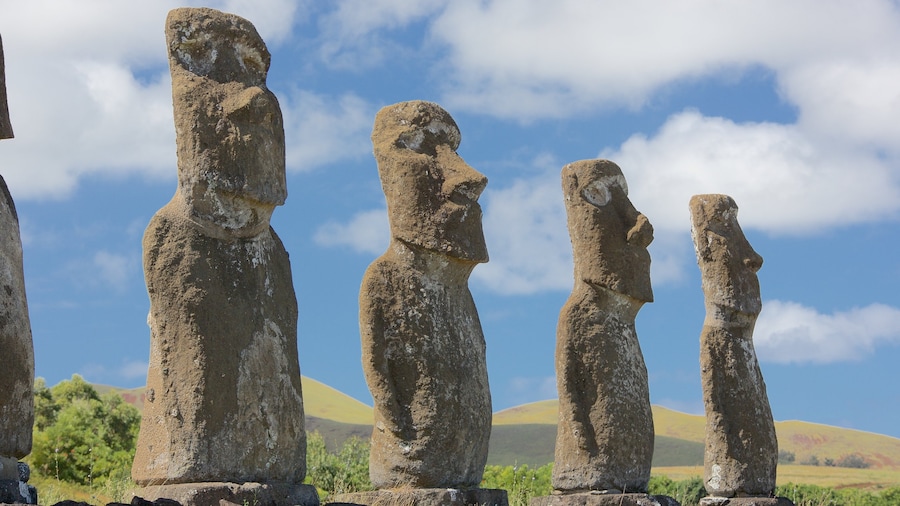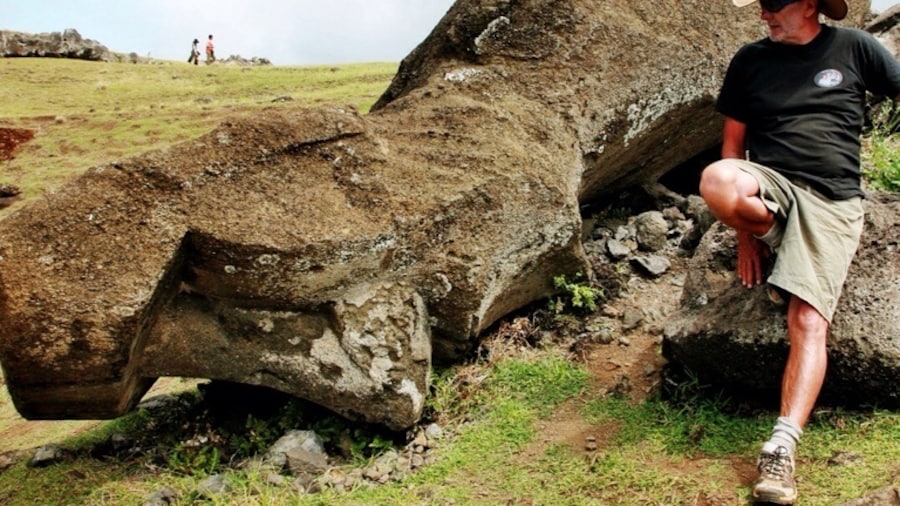Rano Kau is one of the natural highlights of this tiny Pacific island. The volcano reaches a height of 1,063 feet (324 meters) and forms the southwestern cape of Easter Island. Hike to the top and marvel at the panoramic views overlooking the ocean, the island and the freshwater crater lake.
Trek up the volcano slopes, which were formed by basaltic lava flows. The most recently formed rocks are between 150,000 and 210,000 years old. Over the years, erosion has caused parts of the crater wall to merge with the coastal cliffs.
Bring a camera along and take photos of the large crater, which has a diameter of almost 1 mile (1.6 kilometers). The crater has its own microclimate allowing unique green marshes to grow in and around the lake. Stroll around the edge, where unusual vines and figs that grow nowhere else on the island can be seen.
Look around the surrounding area to find intriguing rock carvings created by the indigenous Rapa Nui people centuries ago. Enjoy a picnic with your family on the rim of the volcano.
Lodged between the sea cliff and the inner crater wall on the southwestern side of the volcano lies the ceremonial village of Orongo. See the stone houses built into the slopes of the grassy hill. In the 1800s, archaeologists discovered a site full of moai sculptures on the cliff, but they had all fallen to the beach by the 20th century.
Visitors must pay a fee to enter the Rapa Nui National Park, which encompasses Rano Kau. Buy tickets at the airport or at the National Forestry Corporation (CONAF) offices in OrongoandRano Raraku.
The Rano Kau volcano is in the southwest of the island, around 4 miles (6 kilometers) southwest of Hanga Roa by car. Driving from Hanga Roa should take around 20 minutes. Alternatively, get here by bike or on foot.











